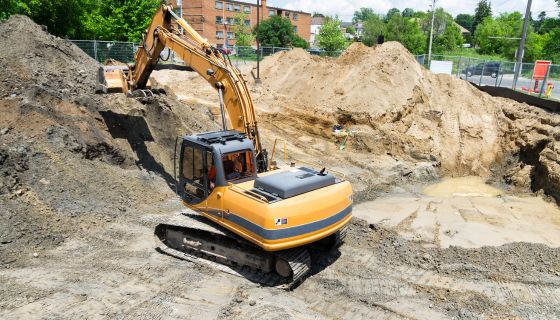Performing a Phase 1 Desk Study is crucial for assessing environmental risks associated with development projects. However, several common pitfalls can undermine the effectiveness and accuracy of these assessments. By understanding these pitfalls and implementing preventive measures, stakeholders can ensure thorough and reliable Phase 1 Desk Studies. Here are key pitfalls to avoid:
1. Insufficient Historical Research
Pitfall
Incomplete Data: Failing to conduct comprehensive research into the historical land use and previous activities on the site can result in missing crucial information about potential environmental risks.
Prevention
Thorough Documentation: Ensure thorough examination of historical maps, aerial photographs, and land registry records. Document all findings meticulously to capture any past uses of hazardous materials or activities that could impact environmental conditions.
2. Inadequate Site Walkover
Pitfall
Superficial Inspection: Conducting a cursory site walkover without thorough examination of the property and surrounding areas may lead to overlooking visible signs of contamination or environmental hazards.
Prevention
Detailed Site Inspection: Perform a detailed physical inspection of the site, noting any anomalies, such as stained soil, unusual odors, distressed vegetation, or abandoned structures. Take photographs and detailed notes to support observations.
3. Overreliance on Environmental Databases
Pitfall
Incomplete or Outdated Information: Depending solely on environmental databases without verifying the accuracy or relevance of data can lead to overlooking local sources of contamination or environmental risks.
Prevention
Cross-Verification: Supplement database searches with local knowledge and field observations. Verify data from multiple reliable sources, including regulatory agencies, to ensure comprehensive coverage of potential contamination sources.
4. Neglecting Regulatory Compliance Checks
Pitfall
Ignoring Regulatory Requirements: Failing to review current and past regulatory records related to the site can result in non-compliance with environmental regulations and potential legal liabilities.
Prevention
Regulatory Review: Conduct a thorough review of regulatory records to identify any past violations, enforcement actions, or cleanup orders associated with the site. Ensure compliance with all applicable environmental laws and regulations.
5. Inadequate Geological and Hydrogeological Assessments
Pitfall
Incomplete Understanding of Subsurface Conditions: Neglecting geotechnical and hydrogeological assessments can lead to misunderstanding soil stability, groundwater flow patterns, and potential pathways for contaminant migration.
Prevention
Comprehensive Assessments: Engage qualified geotechnical and hydrogeological experts to conduct thorough assessments. Evaluate soil characteristics, groundwater quality, and subsurface conditions to accurately assess environmental risks and impacts.
6. Poor Data Analysis and Reporting
Pitfall
Inaccurate Interpretation of Findings: Inadequate analysis of collected data or insufficient documentation in the Phase 1 Desk Study report can lead to flawed conclusions and ineffective risk management strategies.
Prevention
Robust Data Analysis: Ensure meticulous analysis of all collected data, integrating findings from historical research, site inspections, and technical assessments. Clearly document methodologies, findings, and conclusions in the final report to support informed decision-making.
7. Lack of Stakeholder Communication
Pitfall
Limited Stakeholder Engagement: Failing to involve key stakeholders, including property owners, developers, and regulatory authorities, throughout the Phase 1 Desk Study process can lead to misunderstandings and delays in project approvals.
Prevention
Transparent Communication: Maintain open and regular communication with all stakeholders throughout the study process. Share findings, discuss potential risks, and solicit feedback to address concerns and ensure alignment with project goals.
8. Overlooking Emerging Risks and Contaminants
Pitfall
Failure to Identify Emerging Contaminants: Neglecting to consider emerging contaminants or changing environmental conditions in the Phase 1 Desk Study may lead to underestimating future risks.
Prevention
Stay Updated: Stay informed about emerging contaminants and evolving environmental regulations. Incorporate flexible risk management strategies in the Phase 1 Desk Study to address potential future risks and uncertainties.
Conclusion
Avoiding common pitfalls in Phase 1 Desk Studies requires careful planning, thorough research, and diligent analysis. By addressing these challenges proactively and implementing preventive measures, stakeholders can conduct effective assessments of environmental risks, ensure regulatory compliance, and support sustainable development practices. Investing in a robust Phase 1 Desk Study early in the project lifecycle not only protects investments but also promotes environmental stewardship and responsible project management.



